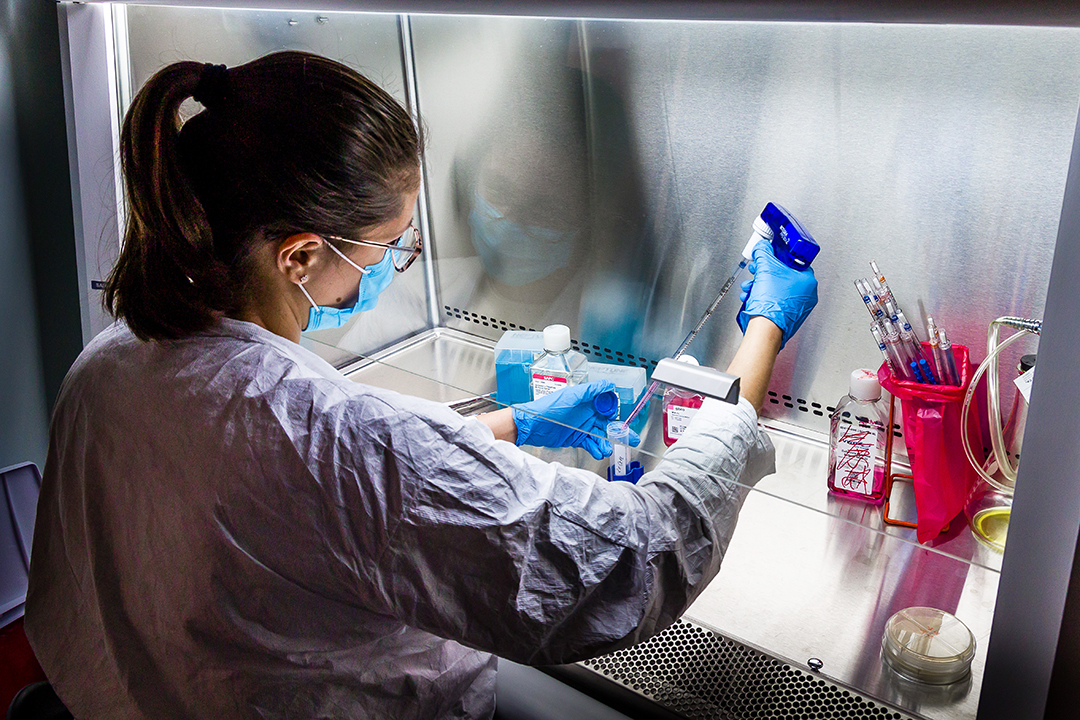Nadea Dundore ’22
2021 SOAR Profile
Do Selenium Antioxidants Aid in Bacterial Killing in a Macrophage Infection Model?
Major: Biology
Hometown: Allentown, PA
Project Advisor(s): Dr. Kara Mosovsky
Briefly describe your project.
Found in places such as Southeast Asia and Northern Australia, Burkholderia pseudomallei is a hazardous bacterium that can cause a disease such as melioidosis. Current treatments for this disease are expensive and not always effective. For my research project, I used the model organism Burkholderia thailandensis and looked at a selenium antioxidant–sodium selenite–as a potential treatment on bacterial-infected white blood cells (macrophages). Throughout my project, I utilized a procedure known as the Macrophage Infection Model which consists of infecting healthy white blood cells with bacteria, applying treatments, and quantifying the remaining bacteria. The data from antioxidant-treated infected cells can then be compared to non-treated infected cells and we could see if the antioxidant had an effect.

Nadea Dundore ’22
Describe the origin of your project. (E.g., did you pitch the idea and choose a faculty member, or did they come to you with an idea?)
I reached out to Dr. Mosovsky about doing research with her and she told me about ongoing research that she and her students have been working on. Previous studies (in her lab) found that a selenium antioxidant, seleno-l-methionine, was effective in decreasing the bacterial burden on the white blood cells. From this finding, we both thought it would be interesting to see if a different selenium antioxidant would have a similar effect or not.
What’s the best part about working with your faculty mentor? What valuable insights have they brought to your project?
For me, the best part was the one-on-one time. Not everyone has the opportunity to work in collaboration with their professor on a project or have such individualized time with them. Dr. Mosovsky brought various insights and was always encouraging.
What has been your biggest obstacle so far?
I would say that the biggest obstacle so far would be getting results we weren’t expecting. We expected that doses of sodium selenite that ranged from no effect to slightly toxic on healthy white blood cells would be at least inhibitory on bacterial growth. But when we applied this range of doses on the bacteria alone and infected cells, we did not see a decrease in bacteria. So, we reevaluated and decided to test even higher doses on the bacteria alone and infected cells.
What has been your biggest takeaway from this experience?
My biggest takeaway from this experience is that I like doing research. I did not have the opportunity to participate in research before SOAR so I was not sure if I would enjoy it. But I found that I do like forming questions and running experiments to try to answer them.
What was the result of your project?
We found that doses of sodium selenite that inhibited bacterial growth and/or killed bacteria alone were toxic on white blood cells that were infected. We did not expect this as we thought that these doses would effectively decrease bacterial burden on infected cells without harming the cells themselves, as seen with the previous antioxidant (seleno-L-methionine).
In your own words, how do you feel about being awarded this opportunity? Why should other students take advantage of the SOAR program at Moravian University?
I am grateful that I have had the opportunity to participate in SOAR here at Moravian–it was nice to be able to explore research. Other students should take advantage of the SOAR program as there is an encouraging environment and it provides the opportunity to learn new skills that can be used in future research and/or classes.
Now that SOAR is over, do you plan to expand upon your research? If so, how?
I plan to continue with research over this upcoming year. The questions I aim to answer may differ from the ones now, but the research I will do will be similar to what I worked on during SOAR. At the end of my SOAR project, I ran an experiment of sodium selenite alongside other treatments on infected cells. The results from this final experiment will provide guidance with next steps in research this year.
Have you, or do you plan to present this research outside the SOAR presentations? If so, where? Be specific, if possible.
I have not yet presented this research outside of SOAR but I plan to attend and present my research at upcoming conferences.
